Beans offer big benefits, like plant-based protein, fiber and other nutrients that support a healthy lifestyle. And, they are also convenient and cost-effective. Add them to salads, stews, and other hot meals, or make a dip or spread to pump up the protein content of your meals.

If you’re not eating beans you’re missing out.
They’ve long been known as a healthy food, but with American’s on the hunt for more plant-based proteins, they’re receiving more attention than ever. Research has shown that including beans as part of a healthy eating plan may slow the progression of certain chronic diseases, as well as help satisfy hunger levels while eating fewer calories. If you’re wondering how one type of food can do all that, read on.
What Are Beans?
Beans are a member of the legume family with their other family members – lentils, peas, peanuts and soybeans. They are grown across the US, with North Dakota, Michigan, Minnesota, Nebraska and Idaho being the top 5 producing states. According to the bean institute, American farmers grow ~twice as many pinto beans as any other bean. I was sort of shocked to learn this. I eat my fair share of black beans, kidney beans and garbanzo beans, so I guess I was expecting one of those to top the list. According to USDA data, a 14% of the US population eat beans on any given day. As a population, Americans are not yet even close to meeting recommended daily intake of legumes. That means missing out on this nutrient-rich food.
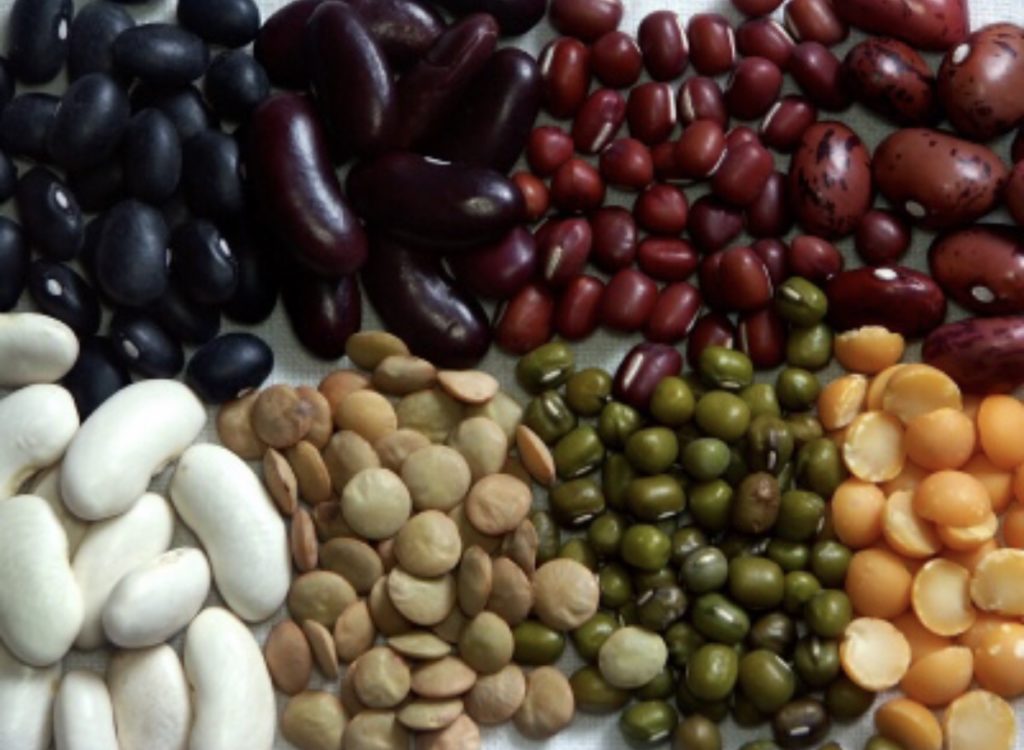
Beans As A Meat Alternative
The movement toward plant-based eating and sustainable diets are on the rise, and that is moving beans into the spotlight. Many people recognize beans as a good source of plant-based protein, but they have other nutrients found in meat, poultry and seafood that make them a great vegetarian alternative. They are a good source of both iron and zinc, too.
Bean nutrition
Nutrient density is all about getting the biggest nutrient bang for your calorie buck. Beans are just that. Not only do they have the protein, zinc and iron mentioned above, beans also contain many nutrients found naturally in other vegetables. They provide high-quality complex carbohydrates and are an excellent source of fiber. Just ½ cup of cooked beans contains between 6-10 grams of fiber, depending on the bean. Navy beans top that chart, with 10 gramd of fiber per ½ cup serving.
Beans are a good source of folate, potassium, magnesium, manganese and selenium. They even provide small amounts of calcium.
On average, ½ cup serving of cooked or canned beans contains ~115 calories, 8 grams of protein, 21 grams of carbohydrates and 7 grams of fiber. Canned and dried varieties offer similar nutrient profiles, but canned beans have more sodium.
Research in both children and adults has shown that people who eat beans get more of these key nutrients in their diets than people who do not eat beans.
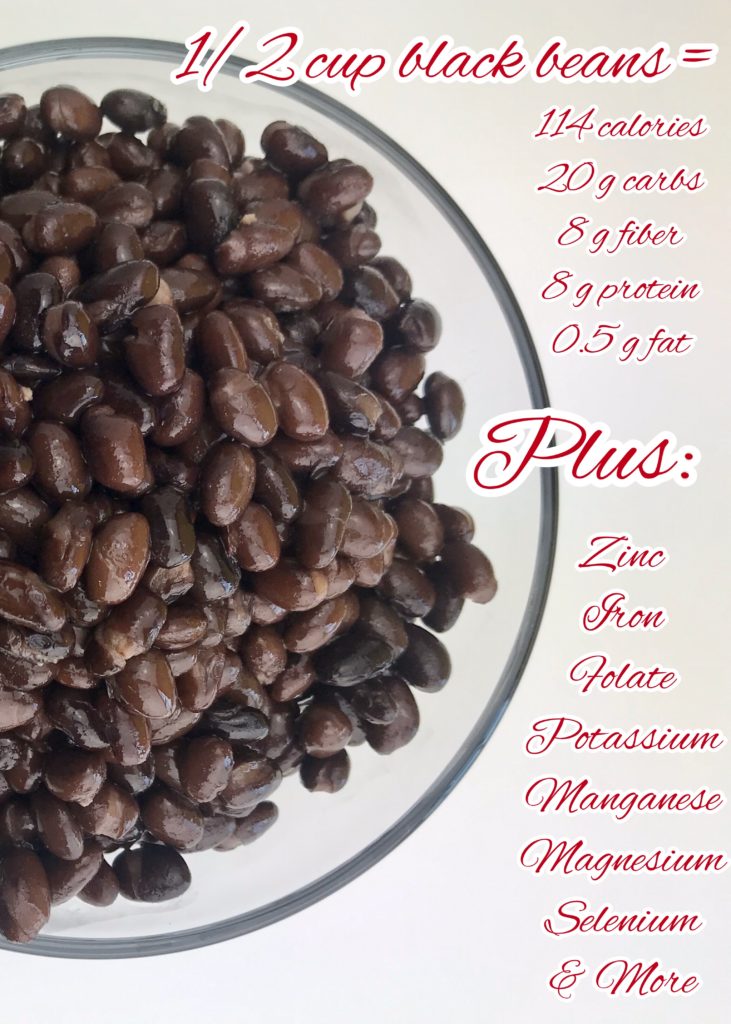
Beans Are Warriors When It Comes To Weight Management.
While no single food can manage your weight alone, beans do have a role in supporting weight management. Their high fiber content, and vegetable protein help to increase feeling of fullness and reduce hunger, helping to control appetite between meals. This can be especially beneficial when following a reduced calorie diet or trying to lose weight.
In fact, results of the National Health & Nutrition Examination Survey (NHANES) showed that bean eaters not only have better overall nutrient intake levels, they also had lower waist circumference and a 22% reduced risk of being obese. They had lower systolic blood pressure, too.
So, if you’re looking for a food to help fill you up, while helping you load on nutrition, go get yourself some beans.
Beans Help Combat Chronic Disease
Everyone’s eating plan should include foods that help slow the progression of chronic disease. And you guessed it, beans are a winner here too. Unlike meat-based proteins, beans are naturally low in fat, are free of saturated fat and trans-fat, and are a cholesterol-free source of protein.
Research shows that a diet including beans may help to reduce blood cholesterol, a leading cause of heart disease. Studies have also linked bean consumption to a lower risk of hypertension and some types of cancers. And, the soluble fiber in beans works to slow the rise in blood sugar after we eat, making them a perfect food for those with diabetes.
Beans Are Convenient And Cost–Effective
All of those health benefits are great, but there’s more. Beans are also cost-effective and convenient. Anyone who claims it’s expensive to eat healthy surely hasn’t been cooked with beans. One can of beans (even organic varieties) provides 3 ½ servings and can be found for as little as $1.00. Dry beans are even less expensive, they just require more preparation. They must be rinsed, soaked and cooked to be tender and edible. Ideally, they should soak over-night.
Canned beans are higher in sodium but very convenient. If you choose canned, drain and rinse the beans under water a few times to reduce the sodium level.
Canned and dried beans last a long time in the pantry, but it’s best to use them within one year of purchase.
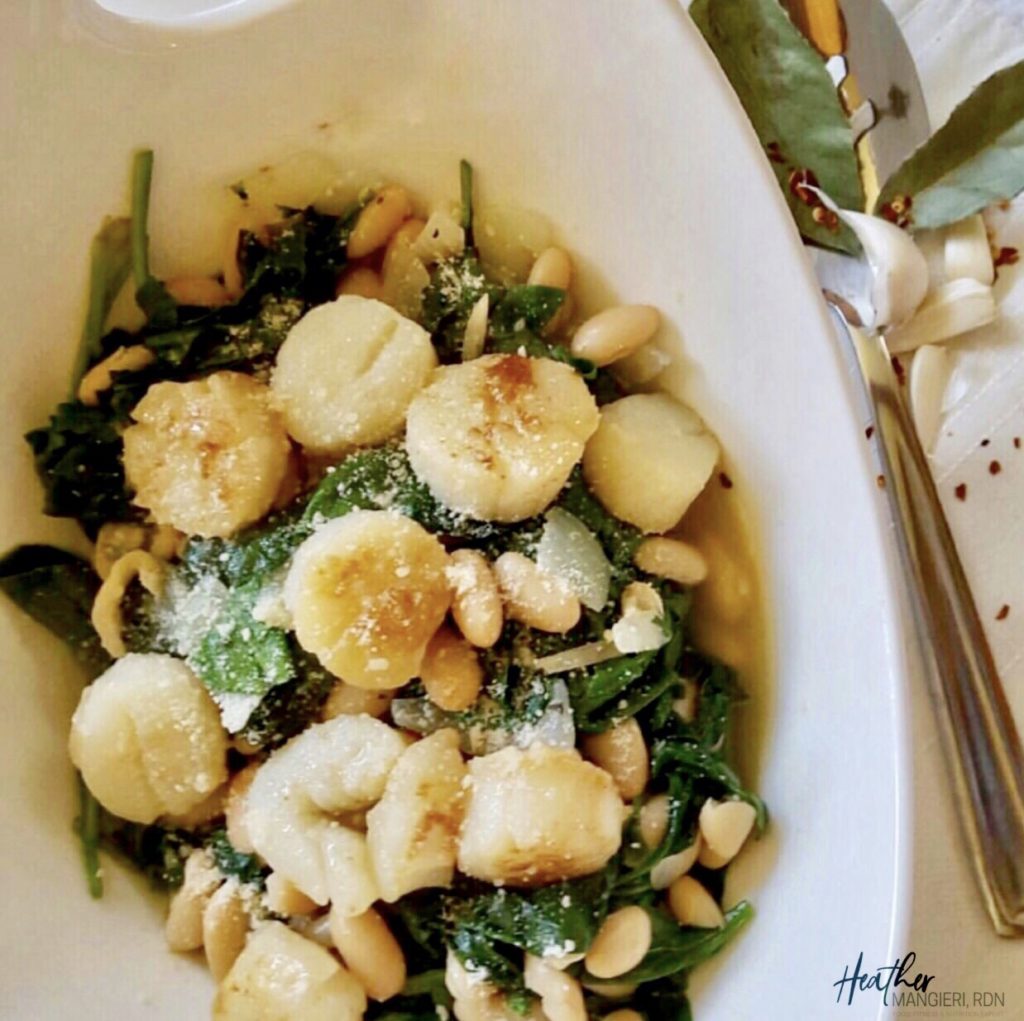
Cooking With Beans
You can pump up the protein content of any dish by adding beans. Because they are so versatile, they go great in soups, stews, salads and chili and also mix well with greens and a variety of grains. This turkey, bean and pasta soup is a favorite in my house.
Homemade hummus or bean dips taste great paired with raw vegetables and they add nutrition and flavor to wraps and sandwiches. It also is great as a flavor topping for fish, chicken or other protein picks too. Try my seared scallops with spinach and beans dish or this chicken, chickpeas and broccoli entrée. They are two of my favorites!
Do you have a favorite way to incorporate beans into your diet?
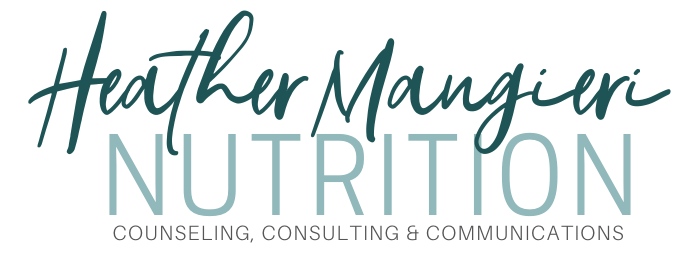
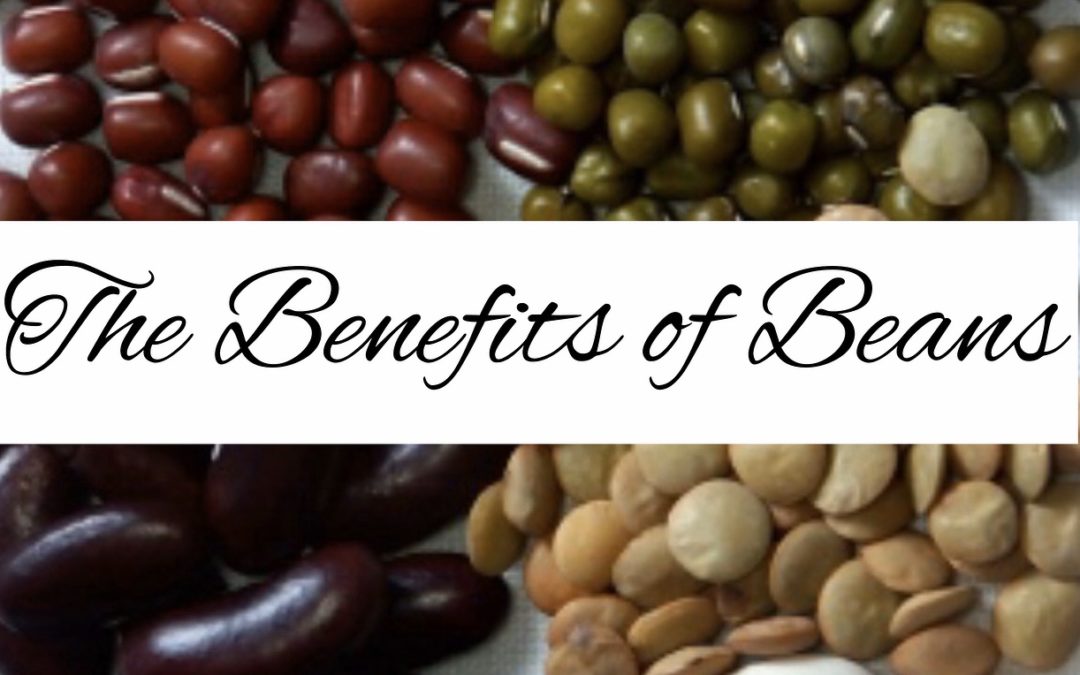
 Hi, I’m Heather – a registered dietitian, busy mom, consultant, adventure junkie and travel addict who has mastered living healthy on the go. My blog is where I share simple recipes and healthy living tips to help and inspire others to live their best life.
Hi, I’m Heather – a registered dietitian, busy mom, consultant, adventure junkie and travel addict who has mastered living healthy on the go. My blog is where I share simple recipes and healthy living tips to help and inspire others to live their best life.
This is delicious! I made it for non-bean loving kids who ate it up.